
Prompted: Intentional AI Literacy for a New Frontier
Related articles:
Cover to Cover | The Art of Iterating
The Power of Inquiry | Next Stop | AI in Design, Fabrication and Robotics
Do Not Rewrite this Paper for Me | From Broad Strokes to Refined Understanding
By Gina Gelber
Since its founding in 1841, Punahou School has been at the forefront of educational excellence, defined by its ability to balance tradition with innovation. Today, as artificial intelligence (AI) opens a new chapter for humanity, the School is once again drawing on this legacy to navigate the future with clarity and purpose.
In 2024, facing the rapid rise of AI, Punahou established the Emerging Technology Executive Committee (ETEC). This group includes a cross-section of academic and administrative leaders, among them President Michael E. Latham ’86, Academy Principal Gustavo Carrera, Junior School Principal Todd-Chow Hoy, Director of Teaching and Learning Candace Kodani ’92 Cheever and Chief Information Technology Officer Shige Minami.
At the heart of Punahou’s approach is a human-centered strategy – one that harnesses emerging technologies to advance the School’s Learning Outcomes, which emphasize critical thinking, communication, collaboration, creativity and citizenship, alongside the Hawaiian concepts of kuana‘ike (perspective) and kuleana (responsibility).
What does education look like in the age of AI? This summer, the Bulletin asked members of ETEC to share how Punahou is charting its course. Here, you’ll find a special message from President Latham.
In addition, several committee members participated in a Q&A, addressing complex questions such as: How are young learners engaging with AI? What professional development support is available for teachers? How is the School ensuring AI is used in positive and ethical ways?
A clear theme runs through their responses: none of this work is happening by chance. Every dimension of how AI is experienced in the classroom reflects research-based choices, informed by best practices and insights from experts in the field. These decisions are made carefully, weighing both opportunities and risks. You can see how this work is coming to life in academic experiences we have highlighted following the Q&A section.
By weaving tradition and innovation with intentionality, Punahou is preparing students not only to dream and discover, but also to shape a brighter future with agency and vision.
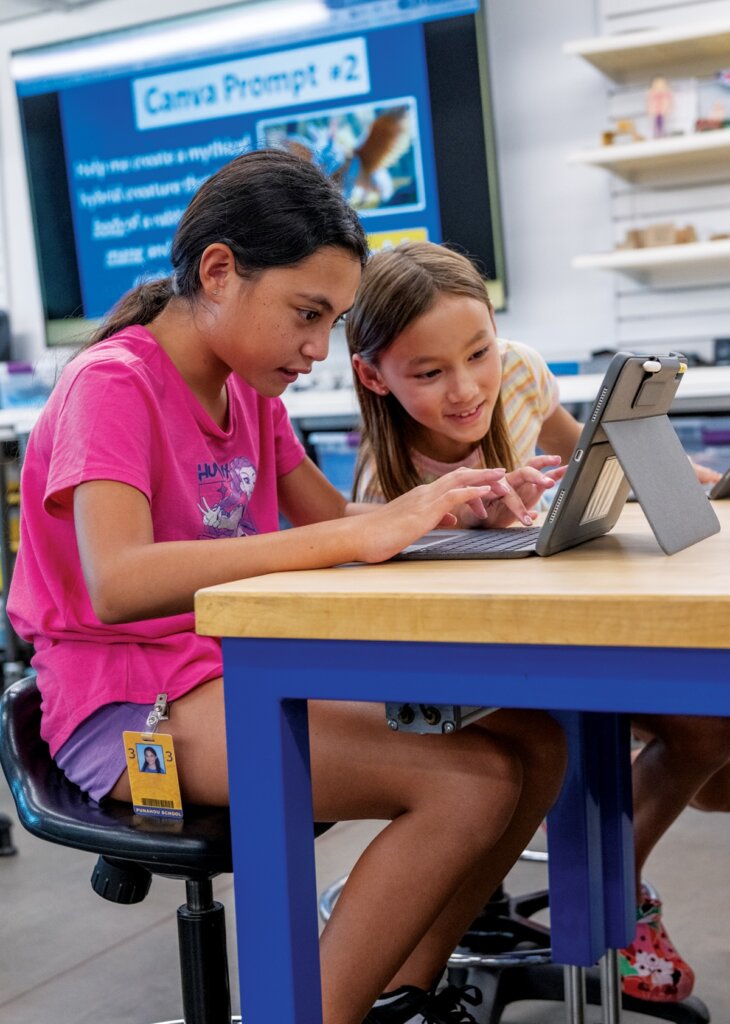
In Design Technology & Engineering class, Grade 5 students are combining imagination, engineering and artificial intelligence to create mythical creatures that exist only in the “Wilds of Wonder.”
“Our approach is both vigilant and optimistic. We recognize the transformative potential of these technologies, but we are equally committed to ensuring their alignment with our core values of student safety, ethical learning and responsible innovation.”
– Shige Minami
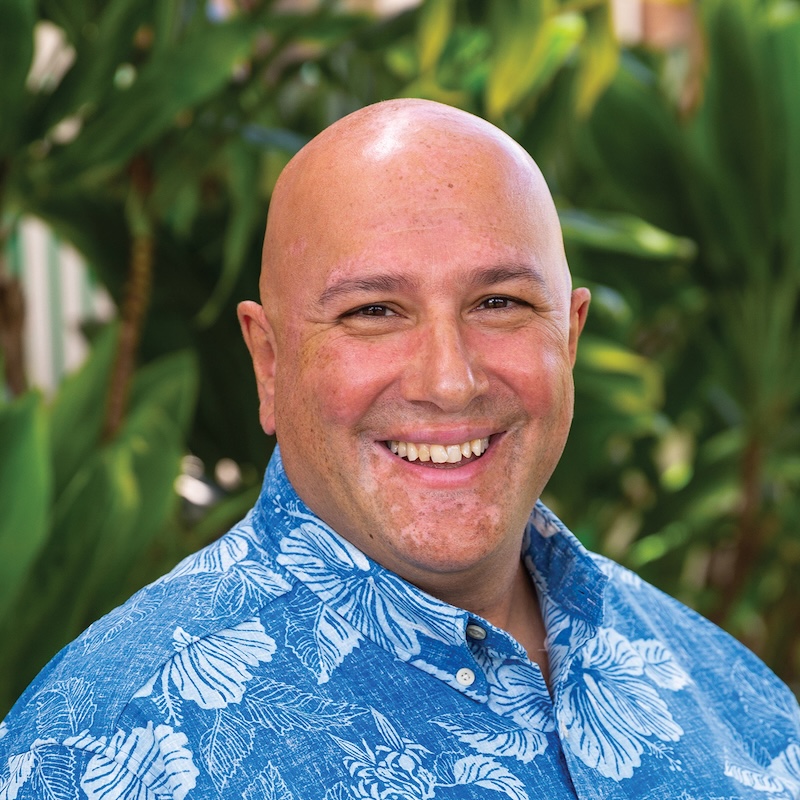
Gustavo Carrera
Principal
Grades 9 – 12
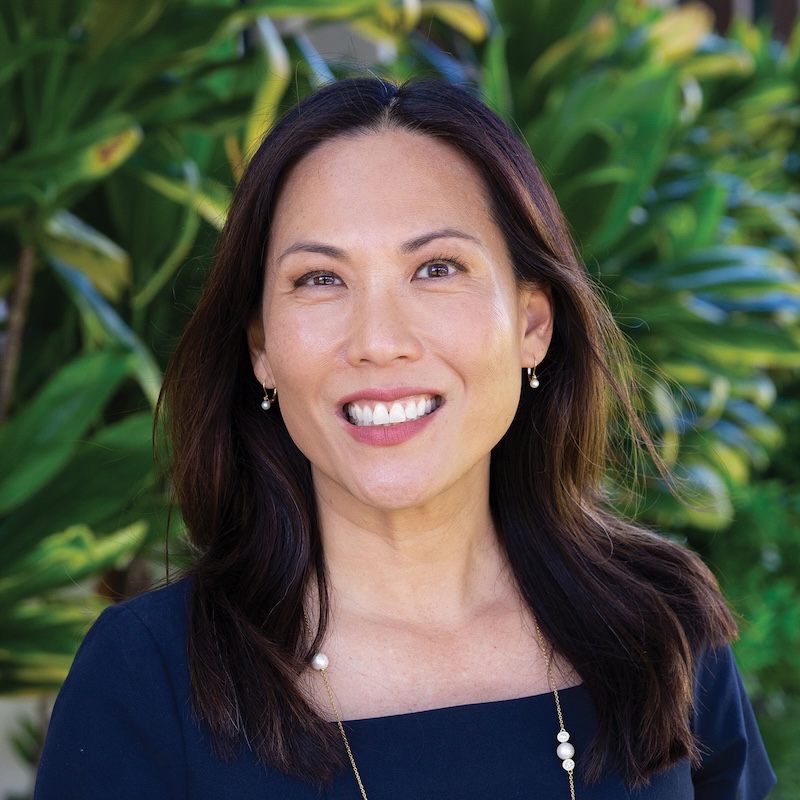
Candace Kodani ’92 Cheever
Director, The Center for Teaching and Learning
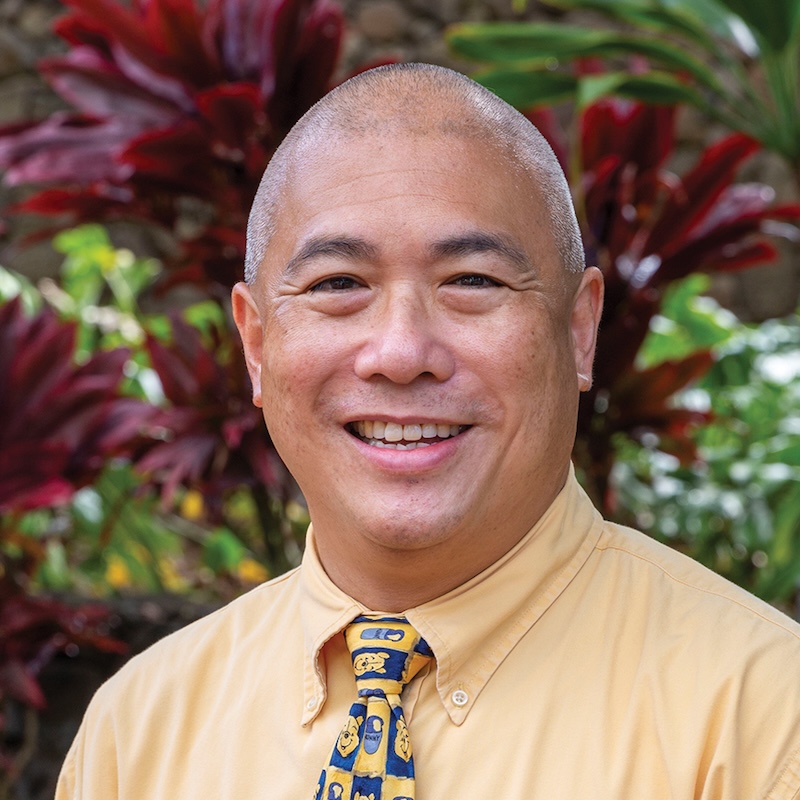
Dr. Todd Chow-Hoy
Principal
Kindergarten – Grade 8
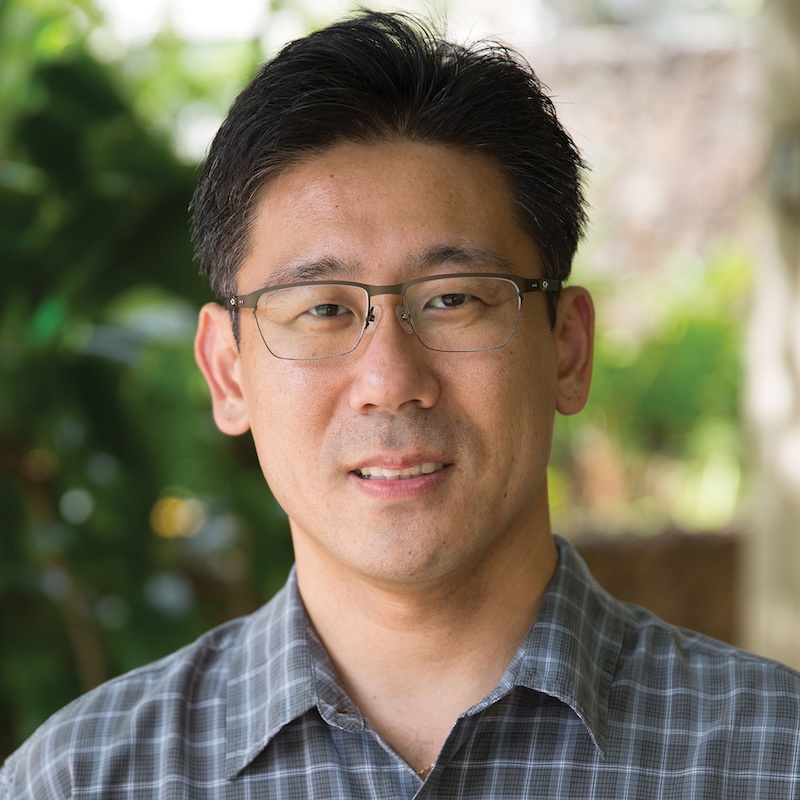
Shige Minami
Chief Information
Technology Officer
Punahou’s leadership has been monitoring the rapid evolution of AI, especially since the release of Large Language Models (LLMs) such as Open AI’s ChatGPT in late 2022. How is the School approaching AI in ways that reflect its core values, while also adapting to this era of unprecedented innovation?
Gustavo Carrera (GC): Our approach to AI is guided by our commitment to educating the whole person. We do not see AI as a replacement for human judgment or creativity, but as a tool that can enhance learning when used with care. This means keeping Social-Emotional Learning (SEL) at the center – helping students cultivate empathy, curiosity, collaboration and moral reasoning alongside their intellectual growth. Our emphasis on relationships and community remains core.
At the same time, we recognize that AI is transforming the world our students will inherit. To prepare them, we are embracing innovation by identifying where AI can enrich teaching and learning, while also establishing thoughtful guardrails.
——————————————-
Candace Kodani ’92 Cheever (CC): As AI-generated content becomes more common, students must develop the critical thinking skills to recognize bias, question misinformation and discern what is human-made versus machine-produced. In a world shaped increasingly by algorithms, this kind of literacy is essential.
We’re approaching AI integration in a way that is aligned with our mission and values. We’re asking: How can this technology enhance teaching and learning? How can it support our educators and empower our students? By staying grounded in these questions, we’re ensuring that AI becomes a thoughtful enhancement to education – rather than a distraction or a disruption.
——————————————-
Shige Minami (SM): Our approach is both vigilant and optimistic. We recognize the transformative potential of these technologies, but we are equally committed to ensuring their alignment with our core values of student safety, ethical learning and responsible innovation.
Futurists say AI will transform the global economy and workforce in ways that are hard to predict. With so much uncertainty, how important is it for students to begin engaging with this technology today?
Todd Chow-Hoy (TCH): The students entering kindergarten this year will graduate from high school in 2038, and while we can’t predict what the world will be like then, we can give them the thinking tools to navigate it successfully.
In the Junior School, I believe we need to approach AI education thoughtfully and age-appropriately, focusing on foundational skills. Students need strong literacy, numeracy, problem-solving abilities and collaborative skills, as they will remain valuable in any future scenario.
At this age, what we prioritize is ensuring that our students develop uniquely human capabilities: empathy, ethical reasoning, creative expression and the ability to work well with others. These skills will become more valuable, not less, as AI becomes more adept at handling routine tasks.
——————————————-
GC: AI is transforming the economy, workplace and daily life faster than we can predict. Students who learn to use AI thoughtfully will not only have a competitive edge in the job market but will also be better prepared to lead with discernment and creativity. More importantly, engaging with AI now helps them develop the habits of questioning, ethical reflection and adaptability that will serve them in their future.
“These experiences show students that AI is not just about writing; it is a set of powerful tools reshaping design, engineering, art and problem-solving across diverse disciplines.”
– Gustavo Carrera
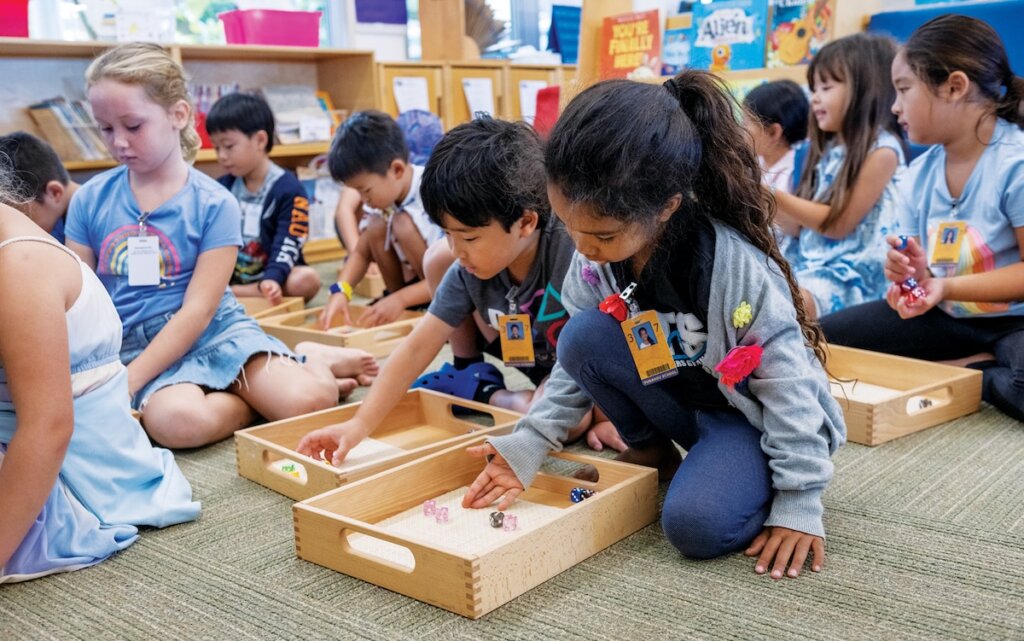
Students in Kelly Quiban’s Grade 1 class engaging in hands-on math activities, which strengthen foundational skills such as recognizing numeric patterns. These tactile experiences support the development of computational thinking and reasoning, which are key building blocks for understanding concepts that underpin AI.
CC: Something you hear these days is “AI isn’t going to take your job, someone who knows how to use AI is going to take your job.” There may be some truth to that. However, the reason for students to learn about AI isn’t that simple. Students need to build the skills and the mindset needed to thrive in a rapidly changing landscape.
If students understand AI, they are more prepared to make informed career choices, adapt to new circumstances, and be more effective in whatever field they pursue. Beyond the workplace, there’s a civic imperative to understand this technology.
Punahou has devoted significant thought and care to how its youngest learners encounter AI. Can you share some of the intentional measures the School has put in place?
TCH: Whether they are aware of it or not, all of our students – even those as young as kindergarten – have been engaging with AI for some time. Most of our curricular apps for the iPad and laptop, like iXL, have an algorithm being used to determine “what happens next” based on responses the student is giving.
However, at a more fundamental level, sometimes just using paper and pencil is helping students understand the computational thinking behind AI. Teaching students computational thinking and reasoning is a core part of our math curriculum, and it’s through those courses that we have an opportunity to engage students in foundational AI literacy. As students expand their understanding, they are better equipped to apply their knowledge when they get to more advanced courses, like Design Technology and Engineering (DTE).
AI has applications that extend well beyond LLMs, especially for students in the Academy. What are some diverse ways in which AI can be used?
GC: There are so many opportunities. In many aspects of Design,Technology and Engineering (DTE), including robotics, fabrication and programming (turn to page 36). We also have a new course in Computer Science, “Understanding AI: From Concepts to Creation,” which teaches students the ethics of AI, how Large Language Models function, and how to build data sets to solve real-world problems. Then there is Advanced Computer Science in which students are engaging with many community service projects. These experiences show students that AI is not just about writing; it is a set of powerful tools reshaping design, engineering, art and problem-solving across diverse disciplines.
——————————————-
SM: AI offers a broad spectrum of learning possibilities – from intelligent tutoring systems and language translation to personalized feedback and project-based learning support. Teachers at Punahou are exploring tools that help students iterate, generate simulations, or better visualize complex concepts.
Critical thinking and communication are two essential pillars in Punahou’s Learning Outcomes. How is AI shaping the ways these skills are taught?
TCH: In addition to helping students understand the thinking behind AI, our schedule across the Junior School provides time in class to engage students in dialogue-centered teaching, emphasizing in-class discussion, oral work and collaboration; in-class activities that are designed for original thought; a shift away from traditional assessments to projects and other demonstrations of learning; and the use of tools that allow for personalized learning.
“Punahou’s position is innovative – but measured. We’re dedicating significant time and resources to understanding the latest developments in AI and to exploring both its potential and its pitfalls. Our goal is to be on the leading edge of awareness and preparedness, without rushing into implementation for its own sake.”
– Candace Kodani ’92 Cheever
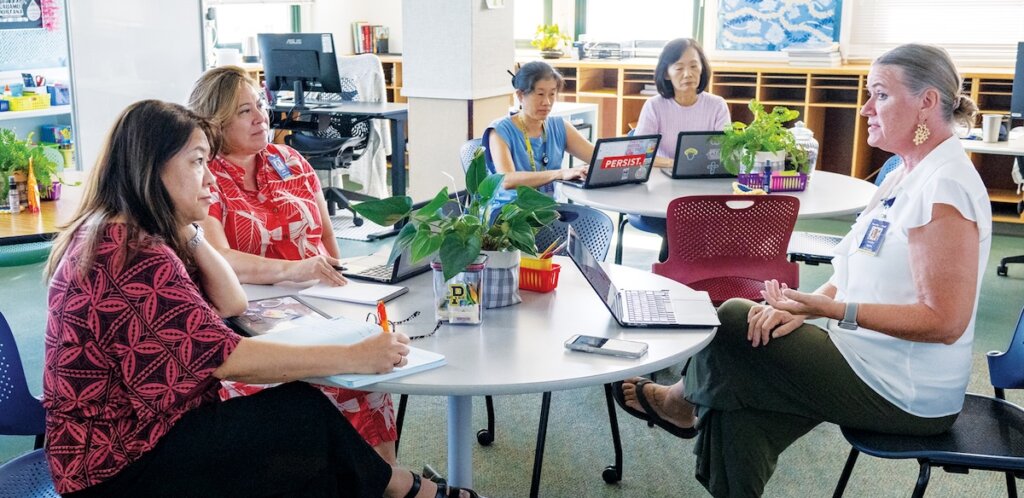
Punahou’s faculty members are receiving essential professional development and technology to help them understand the strategic use of AI. Pictured above, educators attend a workshop on how to optimize prompt commands – to make AI outputs more accurate and faster.
GC: The challenge of AI compels us to reclaim the practices that most powerfully develop student thought. Dialogue-centered teaching, close reading and scaffolded writing become even more essential in this context. Punahou has always centered dialogue as both pedagogy and assessment; we are hoping to double down on that tradition and use oral discussions and presentations as spaces to evaluate reasoning in real time. Close reading pushes students to move beyond AI summaries to genuine interpretation. Scaffolded writing helps them develop original thought, step by step. Together, these practices strengthen critical thinking and communication.
How is Punahou supporting its educators as they build proficiency with AI?
CC: Last school year, Punahou launched an Emerging Technology Team composed of three Academy teachers and one Junior School teacher. This team played a key role in ensuring that every K – 5 grade level and every 6 – 12 department received a tailored “Introduction to AI” workshop, designed to meet the unique needs of each teaching context.
In addition, at the beginning of this year, we asked all faculty members to complete the online Essential Guide to AI for Educators course. This helped establish a common foundation of understanding across the School and ensured that everyone began the year with a shared language and baseline knowledge.
We also launched two pilot programs to provide teachers with access to AI tools specifically designed for educators. Based on the success and feedback from these pilots, we’ve committed to offering ongoing access to Magic School AI, a platform built with the unique needs of teachers and schools in mind. Our educators will also have access to Google AI Pro.
It’s been exciting to witness the creative ways these educators have incorporated AI into their planning and instruction. And while structured training has been important, some of the most impactful professional learning has happened organically. When educators come together to share ideas, examples and lessons from their own experimentation, these peer-to-peer exchanges create space for inspiration, collaboration and reflection.



Last spring, Punahou’s administrative leadership and Board of Trustees visited experts and thought leaders in Silicon Valley for an in-depth exploration of best practices in AI integration – furthering their understanding of implementing AI with a human-centered approach. Stanford University, Google and Apple were some of the stops along the way.
TCH: In the Junior School, we have been extensively playing in the AI Sandbox environment. It is pretty apparent that AI is not an educational fad that will be going away, so we are expecting all of our faculty to lean into learning, tinkering with and using AI. All faculty will be enrolled in our Emerging Technology Specialist Dr. Jen Roble’s Canvas course and each will be provided with an AI toolkit, which includes posters and task cards that were created by Dr. Roble for introducing AI literacy to their students.
In the spring, Punahou’s leadership visited Silicon Valley and met with AI thought leaders at companies including Apple and Google. What were some of the key takeaways from those conversations?
CC: What stood out was the wide range of approaches to AI – even among schools located in the heart of the tech industry. Some are rapidly adopting AI tools in classrooms, while others are taking a more cautious stance. Punahou’s position is innovative – but measured. We’re dedicating significant time and resources to understanding the latest developments in AI and to exploring both its potential and its pitfalls. Our goal is to be on the leading edge of awareness and preparedness, without rushing into implementation for its own sake.
——————————————-
SM: We came away inspired by how these companies are balancing innovation with ethics, transparency and user agency. Their insights validated our approach: move forward with curiosity, but be clear-eyed about the potential pitfalls.
“At the core, we need to be grounded in human-centered learning. We want to teach students to use AI as a starting point for research and brainstorming, but to ground their understanding through the power of direct engagement with others.”
– Todd Chow-Hoy
From an IT perspective, how is the School ensuring that experimentation with AI remains safe and secure?
SM: Punahou IT already follows a meticulous software evaluation process that includes reviewing compliance with the highest academic and security standards, adhering to the Children’s Online Privacy Protections Act and the Family Educational Rights and Privacy Act.
AI-powered tools are evaluated under this same framework, with additional scrutiny around how these systems handle data. For instance, we look closely at whether user inputs are used for model training, how data is stored and where it is processed.
We also pair technical review with clear guidance and community education. By blending long-standing diligence with an evolving understanding of AI-specific risks, we aim to support safe exploration while protecting our community.
What measures is the School taking to promote the ethical use of AI, especially around concerns such as plagiarism, misinformation and bias?
GC: Ethical use of AI is built directly into our curriculum and student experience. For example, in English 1 all 9th graders participate in an AI literacy unit that provides a common foundation. Students learn not just how AI and LLMs function, but also the benefits, risks and ethical implications of using them (see page 40). The goal of these lessons is not just technical skill, but the formation of habits of mind and character.
——————————————-
TCH: Digital Citizenship is a significant part of our library curriculum in grades K – 6. Utilizing tools designed in partnership with Common Sense Media, this is one class where students are learning about what AI is, and understanding AI bias. There are also units embedded in the Health curriculum in Grades 7 and 8 that address AI literacy and the ethical use of AI.
A recent MIT study suggested that frequent reliance on AI for writing can diminish cognitive engagement. What guardrails has Punahou put in place to prevent “cognitive debt” while continuing to encourage deep thinking among students?
CC: Last year, I had the opportunity to participate in Stanford University’s inaugural Designing Your Human-Centered AI Strategy program. One of the key takeaways was the importance of using AI as a tool to enhance, not replace, human thought.
Punahou actively helps students learn to distinguish between letting AI do the thinking for them and using it to extend or refine their own ideas. That means building guardrails into our curriculum – encouraging metacognition, fostering original thought and emphasizing process over product. Ultimately, we want students to see AI not as a shortcut, but as a partner. Our role as educators is to help students build this discernment, so they can use these tools wisely and preserve the deep, cognitive engagement that true learning requires.
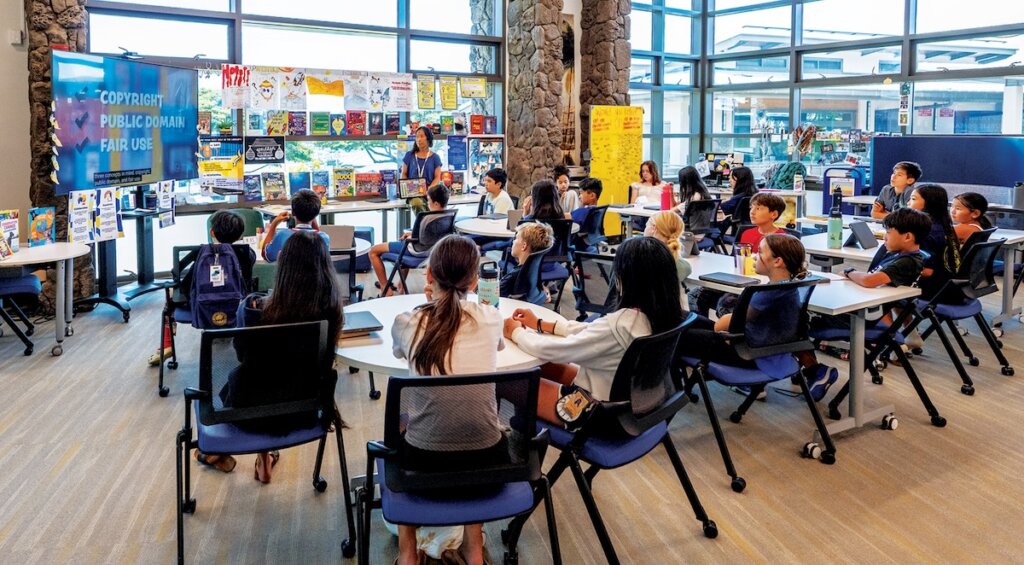
Junior School courses, like Digital Citizenship, highlight the importance of responsible decision-making when it comes to technology. Pictured above, Grade 6 students explore concepts around copyright and citation – essential skills for navigating the digital world with integrity and savviness.
GC: One strategy is to shift attention to the wide universe of AI tools that extend well beyond Large Language Models. Students are already working with AI in design, Computer Aided Design (CAD) modeling, generative design, fabrication, robotics, and data science, tools that require them to problem-solve, prototype and iterate in hands-on ways.
These applications demand that students remain actively engaged rather than passively consuming machine-generated text. In the humanities, we emphasize real-time exams, discussions and scaffolded in-class writing to reclaim spaces for original thought. Across disciplines, the focus is on designing learning experiences that ensure deep thinking thrives.
How can we ensure that students continue to grow in the areas of community engagement and kuana‘ike, which fosters empathy and respect for diverse perspectives?
TCH: AI offers an opportunity to deepen, not diminish, our commitment to sound citizenship and kuana‘ike – but only with intentional guidance and thoughtful implementation. For citizenship, AI tools can be used to enhance community engagement. Students might use it to research local issues, analyze community data to identify needs, or collaborate on solutions to real problems. However, we must ensure that AI is not used as a substitute for face-to-face engagement.
For kuana‘ike, AI can help students access diverse perspectives from around the world, translate languages and analyze multiple viewpoints on complex issues. However, we must also make sure students understand the potential for bias, and teach them to be critical and discerning thinkers as responses may not truly represent authentic voices from all communities.
At the core, we need to be grounded in human-centered learning. We want to teach students to use AI as a starting point for research and brainstorming, but to ground their understanding through the power of direct engagement with others.
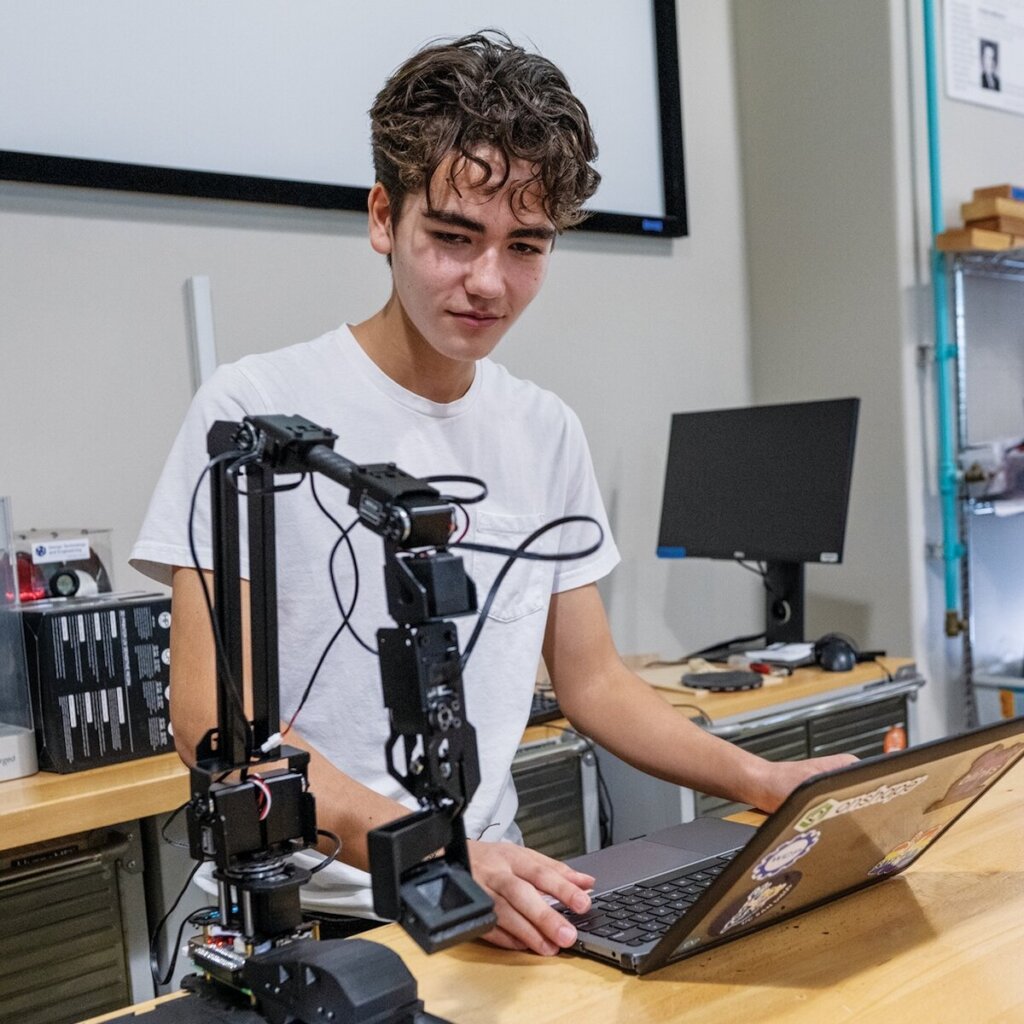
Students in Advanced Robotics are using AI to generate base code for robotic arms tasked with assembling simple structures. They then refine and customize this code to execute complex, task-specific operations.
Related articles:
Cover to Cover | The Art of Iterating
The Power of Inquiry | Next Stop | AI in Design, Fabrication and Robotics
Do Not Rewrite this Paper for Me | From Broad Strokes to Refined Understanding
